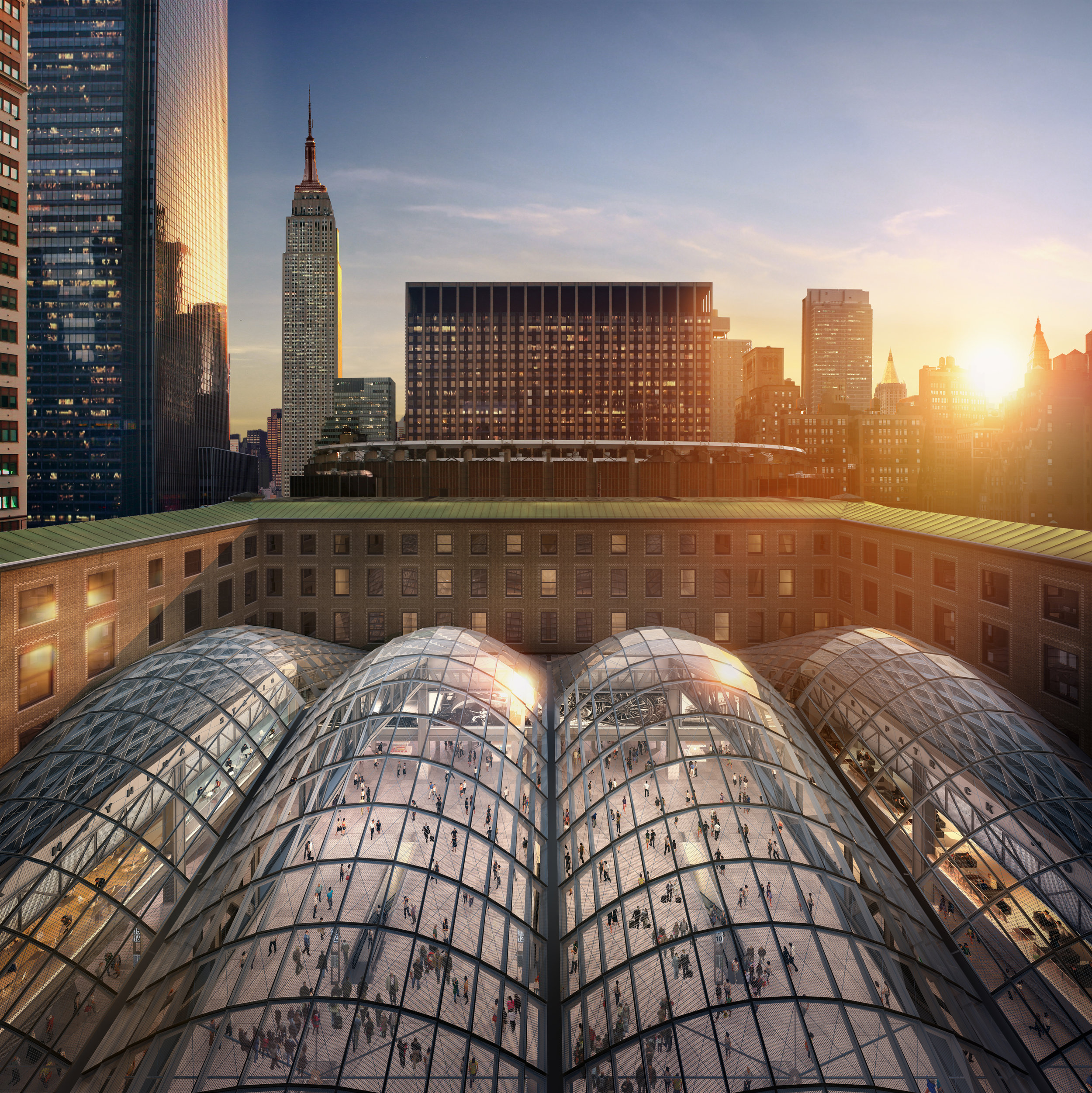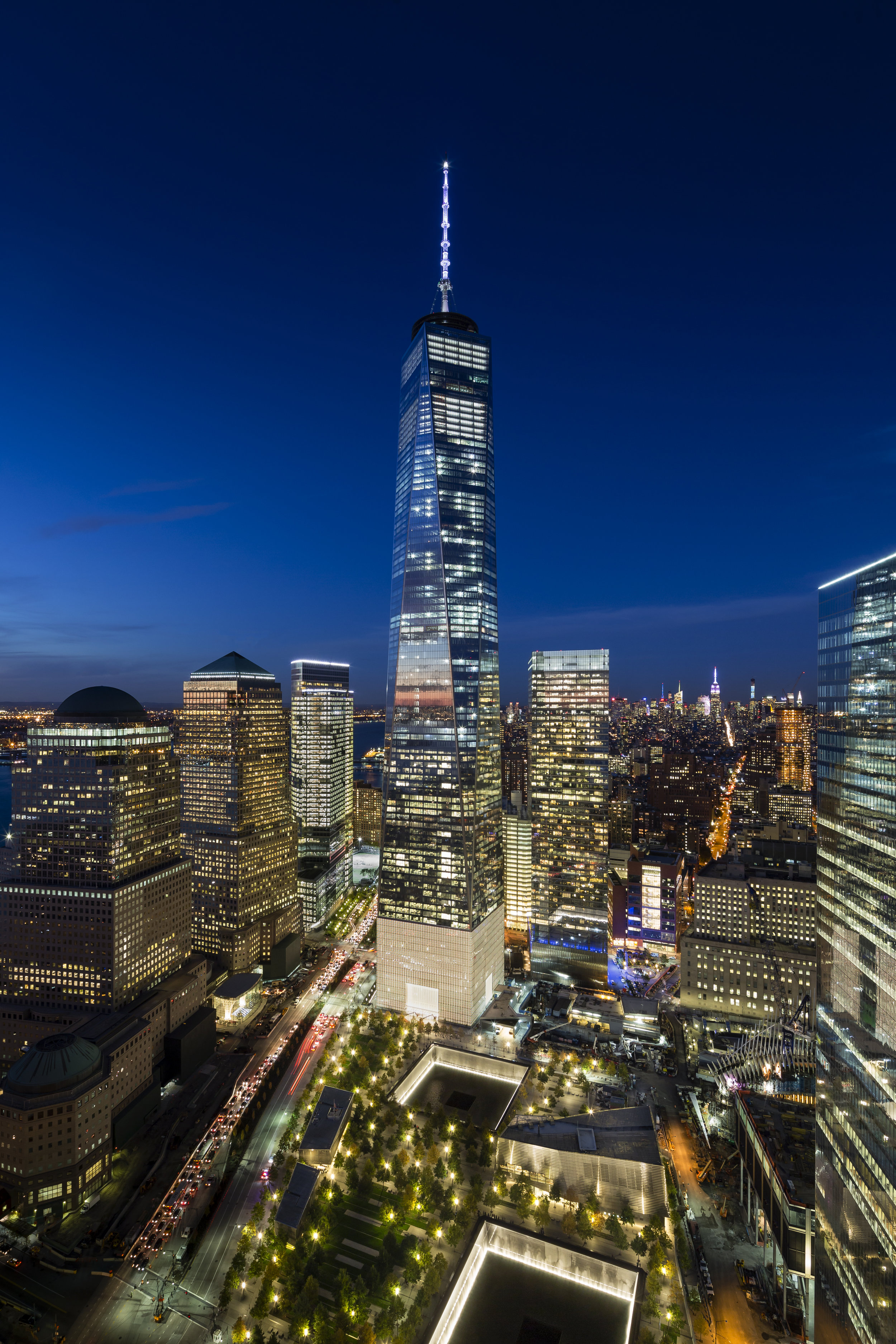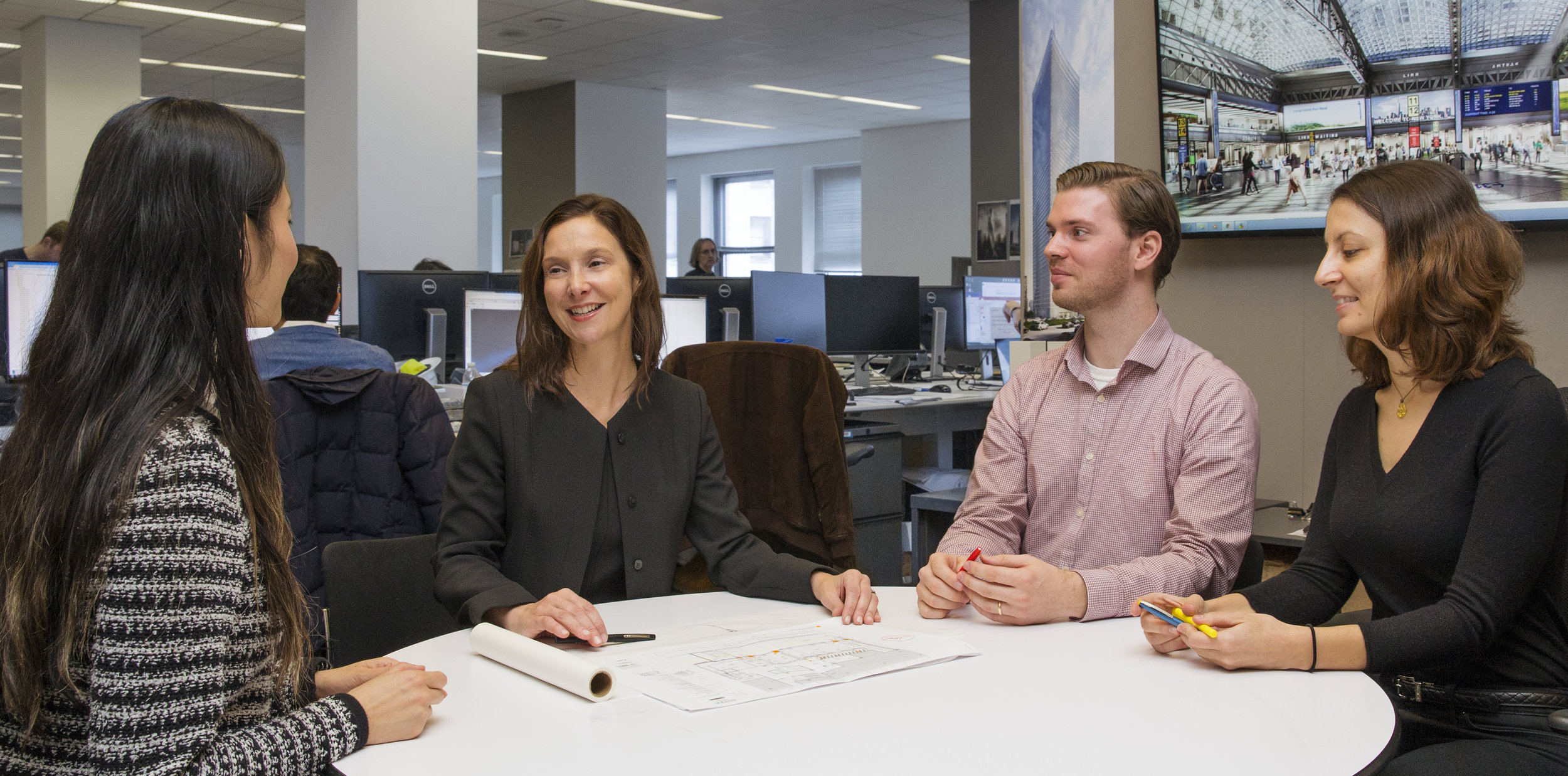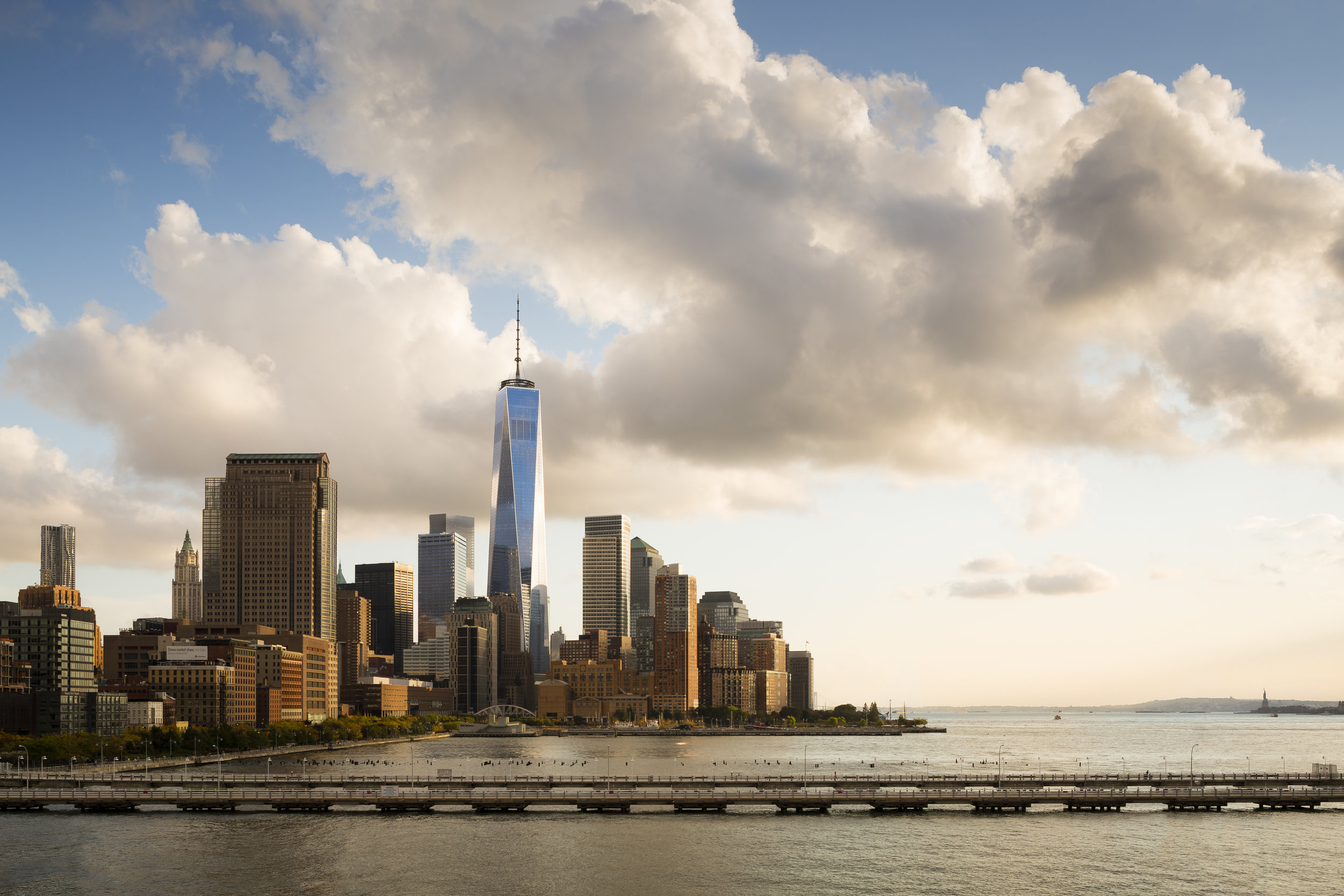Long Visions: Nicole Dosso on Managing Complexity and Making an Impact
By Julia Gamolina Nicole Dosso is a Technical Director in SOM’s New York office, having joined the firm in 1998. A recognized expert in the technical challenges and solutions associated with the design of tall buildings in complex urban contexts, Nicole has extensive project experience that includes work on SOM’s key projects at the World Trade Center site: 7 World Trade Center and One World Trade Center. Her other work in NYC includes the mixed-use 35 Hudson Yards tower, multiple commercial and residential towers comprising the Manhattan West Side, the Baccarat Hotel & Residences, the redevelopment of the Moynihan Train Hall and Farley Post Office Building, and the exterior renovation of 2 Broadway, a 1.2-million-square-foot office tower in the Financial District. Nicole was honored both by Professional Women in Construction and by the American Institute of Architects for her outstanding contributions to the rebuilding of the World Trade Center site. In her conversation with Julia Gamolina, Nicole speaks to her focus on the New York market, learning how to manage complex processes and projects, and the long-term outlook she’s honed, advising young architects to be vocal and open both about what they want to do and what their experiences have been.
JG: How did your interest in architecture develop?
ND: I knew that I wanted to study something specific; I didn’t want to do a liberal arts degree. I applied to Syracuse’s architecture school. In my interview, they asked what had inspired me to want to be an architect. I took Latin in high school, so I told them that my interest was inspired by studying Roman architecture through Latin [laughs].
My dad was also in construction, in infrastructure. He worked on the New York City water tunnels and retired working on the 7 line. His entire career was below grade - completely different than architecture. People always try to make that connection, and there really isn’t one, other than the fact that he took me to construction sites as a kid. Maybe from that familiarity there is some connection there.
Tell me about your early days.
My first six months at Syracuse were really tough – it took me that time just to figure out what to do with an adjustable triangle! After the first year though, I was assured that architecture was meant to be my path and something I really wanted to do. When I graduated, I worked at Perkins Eastman for about a year and a half, and then joined SOM in April 1998. I’ve been here ever since – 20 years! It doesn’t feel that long because I’ve done seven projects, all of which took a very long time. I’m working on the Moynihan Train Hall now, on which the firm has been working for 30 years.
Why SOM and why the technical department?
I wanted to work on large projects and skyscrapers, and was enthralled with the scale in which SOM was working. The technical side is where I had struggled in school, so I figured that if I went in that direction, I would learn the most. For my first project, I was handed a set of Design Development documents and was told I was in charge of detailing the exterior. I was like “Ok, I’ve never detailed an exterior wall!” I tell a lot of young people this story because I learned that when in doubt, just start drawing!
What have you learned focusing on the technical side?
I didn’t expect to make a life decision at the beginning by choosing the technical side, but shortly after I made my choice, I ended up working on 2 Broadway - an existing building stripped down to everything but the structure. It was my first project out in the field and I loved it. I attribute those early days on the construction site to my long term success. The experience was really hard, but I learned to be careful about what I drew and not get into the weeds of things that I realized the contractors knew more about than I ever would. As architects, we are generalists and know about a lot of different things, but contractors know all the nuanced details, like how many studs go in the walls or how to hang stone. I realized that my job was to focus on the design intent, and once I understood that, the contractors that I met in the field became my allies.
I’ve also learned that a ton of design goes into the CD and CA phases. There are always unexpected field conditions and you need to be creative in a really timely manner to make sure the details are kept in alignment with the design intent and to keep construction moving forward. Young people today have a hard time committing to do CA – they really want to do it until they realize how long and hard the process is [laughs]. There is a lot of monotony to it, but if you can peel yourself out of the monotony, you learn so much.
What has been a key milestone in your 20 years with SOM?
Following 9/11, SOM was awarded the design for 7 World Trade Center. I wedged my way onto the project, really wanting to work on the rebuilding effort. 7 WTC will likely be the most important work I will ever do - the city was wounded, so many people were affected, and the healing process was very important. Many people were in alignment to move this project forward – Silverstein Properties, the Port Authority, SOM. That’s such a rare thing, a situation where something is so important that everyone works well together to make a great project. For me, the physical act of rebuilding was to inspire and encourage the people of Lower Manhattan.
When 7 WTC opened in 2006, it had marked ten years since I had been out of school - ten years out was when the first major building that I had worked on was completed. That’s key for students to understand – this industry is not about immediate gratification, and things take a really long time, especially at the scale in which SOM works.
What was the next major project?
After completing 7 WTC, I moved on to 1 World Trade Center. The project wasn’t technically difficult necessarily – there were still challenges as it’s a large, complex building - it was more about management strategy. Getting to grade took a very long time and was a major milestone. Existing pieces of the World Trade Center slab were left in place because they were supporting critical infrastructure for the trains below, so we built around them. The project also bordered the Hub concourse, the Memorial, the Path, the Port Authority fan plant, the Port Authority retail – there were endless amounts of different agencies and owners that each had their own architects and their own consultants. We had to navigate between everybody who was a stakeholder – what happens when the Memorial and the World Trade Center share a wall? Who owns the coordination of that wall? Who’s in charge when there are 100 people in a meeting? The challenge became how to move this process forward in a way that was diplomatic but proactive and the process really honed my ability to manage large scale complex problems with a lot of players.
What have been some of the biggest challenges that you’ve faced?
There have been moments in my career when I wanted to try different things and wished that things weren’t taking so long - trying to stay focused has been a challenge sometimes. However, I look at my life and my career, not on a week-by-week basis, but on a much longer timeframe. I would be lying if I said every day was pleasant and wonderful and has gone exactly as I hoped, but I choose to look at it in much larger segments.
On 1 WTC, I saw many people get caught up in the minutia, the politics, and the daily challenges of the job. I would instead say to myself, “Whatever the issue, it will pass, and I’m going to put my blinders on and focus on what I believe is the right objective.” Looking at it that way, I’ve had a very wonderful career. I can still remember standing in the lobby with my colleagues at the opening of 7 WTC, many of whom are my friends today, and celebrating with my colleagues after completing our CD documents for Tower One. I would recommend to young people to look at their steps and goals in longer frames and to focus on the highlights – especially when working on large projects.
What are you most proud of?
One of the things I’m most proud of having the opportunity to work on the overbuild platform at Manhattan West that connects from Penn Station, over Dyer Avenue, to Hudson Yards, and then to the High Line, making it a major connection which will impact millions of people. It’s not necessarily about a building, but about creating space and shaping the city. Those are the types of projects that are most important for me and my career. They’re extraordinarily powerful.
Where are you in your career now?
I’m largely focused on training the next generation, a responsibility that you take on as a senior leader in any office. I’ve often said that my job is 50% execution and 50% building a solid team that is moving up the ladder. Mentorship is something I’ve really enjoyed – my career is no longer just about gratification in finishing projects and self-fulfillment, but also about providing opportunities for others and watching them succeed.
I’m also really excited about becoming more active in the architecture community outside of work, through speaking engagements and committees, and getting back into academia – I reached out to Dean Speaks at Syracuse University a number of years ago, and have since been on their advisory board. Connecting to students is very important because working in a large firm, I’ve realized that you have to come to the profession ready with a voice and a level of confidence, so that you can be clear about the things you ask for and start carving your own trajectory. Students are a group of individuals that I’m most inspired by and really want to tap into and help them gain those tools, so that by the time they graduate, they have the level of confidence that they need to succeed in the workforce.
What are the biggest lessons you’ve learned?
To know what’s important to you, look at the larger picture of what you’re trying to accomplish, and not get caught up in the finite details. Architecture is a really challenging profession and there are no right answers; you just have to keep working and working and working. You have to come to terms with that, because it’s true in school and in the profession.
I’ve also learned to share your path, and I’ve been very open in the last decade about my experience hoping that people will learn from it. I drove my own success at SOM, but I sometimes wish somebody had said to me – ask for more money, ask for more opportunity. Today, I speak to young women about salary. My advice is to do your research and meet women from other architecture offices. It’s not always easy or reliable to ask your colleague, “How much do you make?” They might not tell you the truth, or tell you something you don’t want to hear. The vehicle is to know people at other firms.
What has been the general approach to your career?
The underlying aspect of my evolution has been that I’ve always been very clear in articulating what it is that I wanted. I knew I was passionate about the technical side and taking projects all the way through, I knew I wanted to work on projects here in New York, and I was always very vocal about that. Maybe I should also have been vocal about my salary [laughs] but I chose, back then, what was most important to me - to stake my territory in the New York market. Because I was vocal and I worked hard, I was then provided those opportunities. It’s a lesson that I find important for people to hear, that it’s appropriate and acceptable to ask for what you want. You need to voice your goals and own the direction of your career.
What’s next for you?
I heard Marilyn Taylor speak about a year ago – she was a partner here at SOM, then the Dean at Penn Design, and now she’s onto new things. Her ability to reinvent herself and find new mediums within the framework of architecture is something I aspire to. Somebody asked me what’s next after World Trade as though what could possibly come after such an important project, and I said, “Something great will always come along - this is New York!” That was when I got interested in infrastructure-focused work and using my voice and past experiences to help the next generation. Aspiring to evolve and being a mentor continues to drive me. The best is yet to come!
[author] [author_image timthumb='on']http://architexx.org/wp-content/uploads/2018/01/MA.jpg[/author_image] [author_info] With experience in design, business development, PR, and marketing, Julia Gamolina is focused on communicating identity in the built environment. She is a regular contributor to sub_texxt, interviewing women in architecture on their career development. She is also on the Young Leader's Group committee for the Urban Land Institute (ULI), and is a Founding Member of the Wing. Julia received her Bachelor of Architecture at Cornell University, graduating with the Charles Goodwin Sands Memorial Medal for exceptional merit in the thesis of architecture.[/author_info] [/author]









